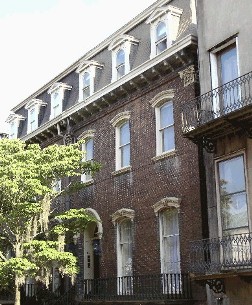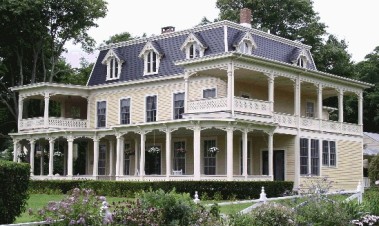|
The Second Empire style
The Second Empire style 1860-1880 Late Victorian
Also known as - Napoleon III, Second Empire Baroque , or Beaux-Arts Style. In the United States it was also called the General Grant style because of its popularity in government buildings during the Grant administration.
During the reign of Napoleon III and the Second French Empire, construction of the New Louvre in Paris in 1850-57 set a fashion for ornate mansard structures and became internationally popular.
Named the Second Empire style it was popular during the Victorian era and reached its popularity between 1865 and 1880. As with all architectural styles the Second Empire style has stylistic relationships with the preceeding Gothic Revival and the Italianate style.
Although there are a great many variations, some general ones can be identified… the building is usually large and has a square or nearly square plan. There is an abundance of classical detail. Usually a high concave or convex mansard roof. Pavilions extend at the ends and usually carry higher mansards.
In the United States, the Second Empire style usually combined a rectangular tower with a steep, mansard roof. By increasing head room in the attic space, it provided an additional usable floor. To provide light on this floor, the mansard roof was almost always pierced with dormers.This tower element can be taller than the rest of the house by a story or two. The roof crest was often topped with an iron trim, sometimes referred to as “cresting”.
The overall use of extensive and complicated ornamentation makes the Second Empire style appear imposing, grand and expensive.
The style also found its way in commercial structures, and was often used when designing state institutions. But its ornate detail was quite costly and fell out of favor when the period of prosperity during the Grant administration turned into the economic depression of the 1870s.
The Second Empire style was succeeded by the Queen Anne Style era, and its sub-styles, which enjoyed great popularity until the rise of the “Revival Era” just before the end of the 19th century. Notable Second Empire buildings in the North America include
• Old City Hall, Boston, Massachusetts, 1862-1865
• New York City Courthouse and Post Office, 1869 – 1875
• Philadelphia City Hall 1871-1881
• War and Navy Building, now the Old Executive Office Building, 1871 - 1887 Washington D.C.
• South Hall, University of California, Berkeley
_______________________________________
Second empire homes feature mansard roofs with dormer windows, molded cornices, and decorative brackets under the eaves. One subtype sports a rectangular tower at the front and center of the structure.
_______________________________________ Second Empire Architecture Features:
The main characteristic of the Second Empire style is the mansard roof design, dormer windows, side or central villa like towers. There are usually decorative brackets below the eaves
• Entry:
o Scroll-sawn spandrel
• Windows:
o Two-over-two double-hung sash
o Hooded windows
o Three-sided bay
•Exterior:
o Prominent central and end pavilions
o Balustrades
• Roof:
o Cornices above and below the lower roof of the mansard roof
o Bracketed finial
o Pedimented dormers
o Hexagonal-shaped shingles
o Cast iron cresting
From Second Empire style to Victorian style
|





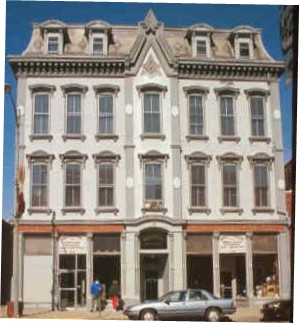
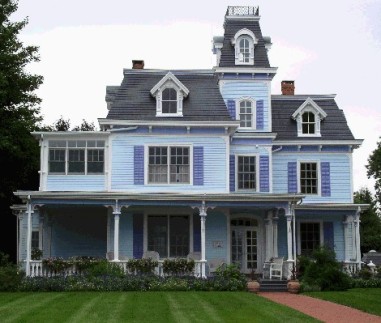
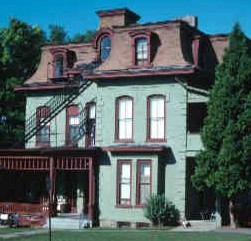
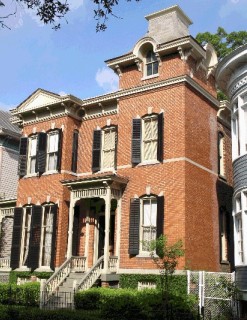 The exterior style was either wood, brick or stone. More hi-style examples frequently have paired columns and sculptured details around the entrances, windows, and dormers.
The exterior style was either wood, brick or stone. More hi-style examples frequently have paired columns and sculptured details around the entrances, windows, and dormers. 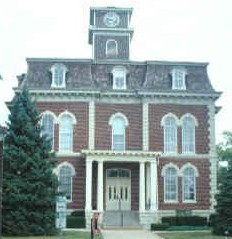
 Entry porch with stoop
Entry porch with stoop 